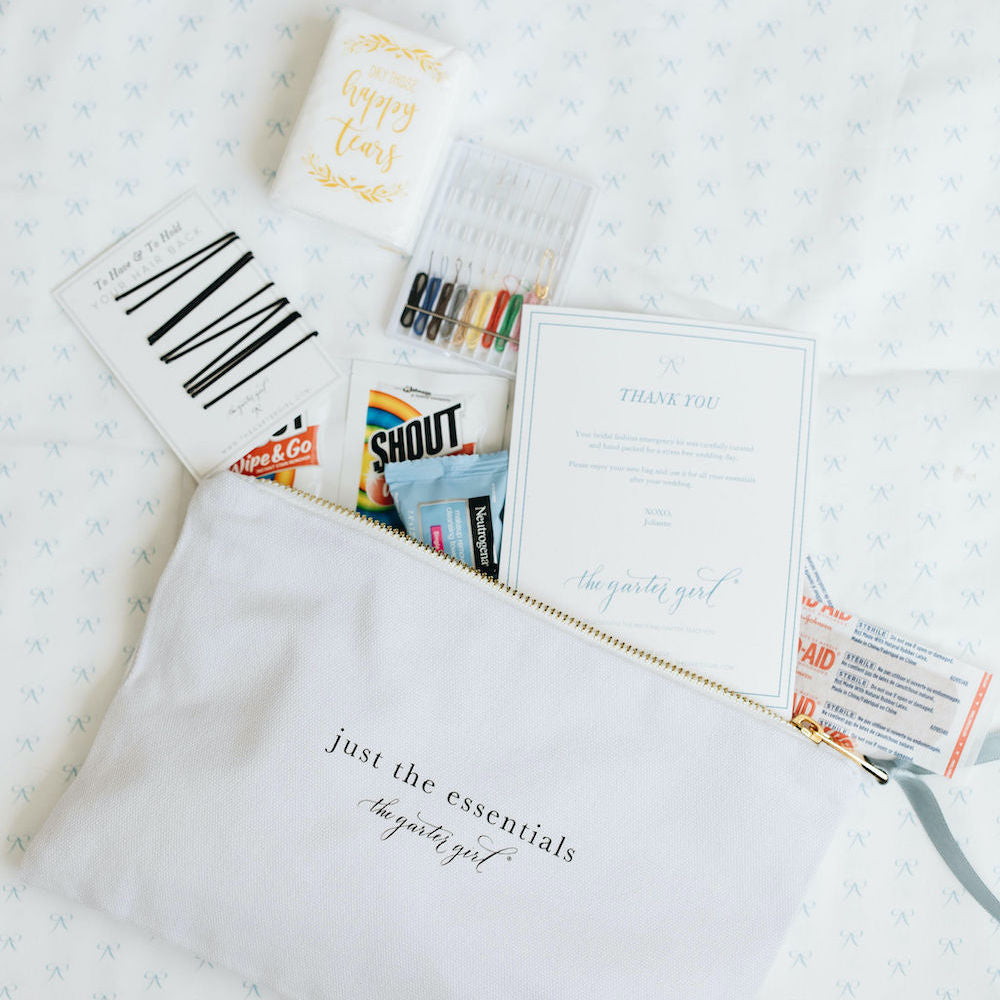The Ultimate Guide to Formal Dress Care: Tips to Keep Your Gown Perfect
You’ve found the perfect dress—the one that makes you feel confident, elegant, and ready to shine. Whether it’s for a wedding, gala, prom, or another milestone event, your formal dress represents more than just fabric and thread.
It’s an investment of both emotion and money, a garment you want to look flawless from the moment you slip it on until the last dance of the evening. But between champagne toasts, enthusiastic hugs, and hours of celebration, how do you keep your dress looking as pristine as it did on the hanger?
The secret lies in thoughtful care at three critical stages: before you wear it, during the event itself, and after the celebration ends. In this guide, we’ll walk you through each phase with practical tips that will help you protect your dress and keep it looking beautiful for years to come.
Before the Event: How to Prep Your Formal Dress
The best defense against dress disasters is preparation. Taking time to properly prep your gown before the big day can prevent most common issues and give you peace of mind.
The Pre-Event Check-Up
Final Fittings Matter: Final Fitting Tips for Formal Dresses
Schedule a final fitting at least a week before your event. This isn’t just about fit—it’s your last opportunity to have a professional check that all hems are secure, seams are reinforced, and embellishments are firmly attached. A loose bead or wobbly sequin is much easier to fix now than when it’s dangling by a thread mid-event.
Steaming vs. Ironing: Best Practices for Delicate Fabrics
Here’s a golden rule: when it comes to formal dresses, steaming is almost always safer than ironing.
The direct heat and pressure of an iron can damage delicate fabrics like silk, chiffon, tulle, and lace, potentially leaving shiny marks or even melting synthetic fibers. A garment steamer, on the other hand, uses gentle steam to relax wrinkles without direct contact.

Wrinkle Removal Done Right
Hang your dress properly as soon as you bring it home. Use the built-in hanging loops inside the dress rather than the straps, which can stretch under the garment’s weight. Keep it in a cool, dry place away from direct sunlight. If wrinkles persist, use a handheld steamer, holding it a few inches away from the fabric and working from top to bottom. For stubborn creases, hang the dress in your bathroom while you take a hot shower—the steam will naturally help relax the fabric.
Transportation & Storage: How to Pack A Formal Dress for Travel
The Right Garment Bag Makes All the Difference
If you need to travel with your dress or store it before the event, invest in a breathable fabric garment bag made of cotton or canvas. Avoid plastic bags, which trap moisture and can lead to mildew, yellowing, or musty odors. Your dress needs to breathe, especially if it will be stored for more than a few days.
Travel Tips for Wrinkle-Free Arrival
Traveling to your event? Pack strategically.
- If you’re driving, lay the dress flat on top of other luggage or hang it in the back seat using a garment hook.
- For flying, consider rolling the dress with acid-free tissue paper between the layers to minimize creasing, or call ahead to ask if you can hang it in the flight attendant’s closet. Some airlines accommodate formal wear with advance notice.
The Emergency Kit: Essential Emergency Kit for Formal Event
Even with the best planning, small mishaps happen. Pack a tiny emergency kit to bring to the event:
- Safety pins in various sizes for quick hem or strap repairs
- Double-sided fashion tape for securing necklines or fixing a fallen hem temporarily
- A mini sewing kit with thread that matches your dress color
- Stain removal pen or wipes (test on an inconspicuous area first!)
- A small bottle of clear nail polish to stop runs in delicate fabrics

This kit can be tucked into a clutch or given to a trusted friend. It’s the difference between a minor inconvenience and a major wardrobe malfunction.
During the Event: Protecting Your Dress from Damage
You’re dressed, you’re stunning, and the event is underway. Now it’s time to enjoy yourself while being mindful of your beautiful gown.
Mindful Movement: How to Sit in a Formal Dress without Wrinkles
The Art of Sitting
Before you sit down, gather your skirt and give it a gentle fluff or smooth it to the sides. This prevents the fabric from bunching underneath you, which can create deep creases or crush delicate embellishments.
If you’re wearing a ball gown or dress with significant volume, sitting gracefully takes practice—but it’s worth it to avoid spending the evening with a wrinkled lap.
Dancing with a Train or Full Skirt
A dramatic train or voluminous skirt is breathtaking, but it can also be tricky on the dance floor.
Consider having a wrist loop sewn in (called a “bustle”) that allows you to hook the train up and out of the way. Alternatively, designate a trusted friend as your “dress handler” who can help you navigate crowded spaces.
When in doubt, gather the train in one hand while dancing or walking through tight areas.
The Stain Scramble: Quick Stain Removal Tips for Formal Wear
The Golden Rule: Don’t Rub
If disaster strikes and something spills on your dress, resist the urge to rub the stain. Rubbing pushes the stain deeper into the fibers and can damage delicate fabric. Instead, blot gently from the outside edges of the stain toward the center using a clean white napkin or cloth.
Quick Fixes for Common Spills
For water-soluble stains like wine, soda, or juice, blot with a damp cloth and let it air dry. For oil-based stains like butter or salad dressing, gently dab (don’t rub!) with a dry napkin to absorb excess oil.
Remember: these are temporary measures only. The real solution is professional cleaning as soon as possible. Trying to aggressively treat a stain yourself can cause more harm than good.
Preventing Snags and Tears on Delicate Fabric
Jewelry Check
Before your event, examine your jewelry. Rings with prominent prongs, bracelets with sharp edges, or textured clutches can easily snag lace, chiffon, or tulle. Consider wearing smooth jewelry and being extra cautious when adjusting your dress or reaching for items.
Venue Awareness
Pay attention to your surroundings. Ornate chair legs, rough brick walls, or even the edges of tables can catch on delicate fabrics. When walking through tight spaces or sitting down, take an extra moment to ensure your dress isn’t in harm’s way.
After the Event: Professional Cleaning and Storage Tips
The party’s over, but your dress care routine isn’t. What you do in the days following your event will determine whether your dress remains a treasured keepsake or becomes a regret.
Immediate Care (The Next Day): Immediate Care Steps After Wearing Your Dress
Air It Out
As soon as you get home (or the next morning), hang your dress in a clean, dry, well-ventilated area. Let it air out for at least 24 hours to release accumulated odors from perfume, sweat, smoke, or environmental scents. This also gives the fabric time to relax after being worn.
Inspect Thoroughly
Before you send your dress to the cleaners, conduct a careful inspection. Check the hem (where dirt and grime accumulate), underarms, neckline, and any areas where you might have eaten or drank. Use a piece of white chalk or a safety pin to mark stains so the cleaner can give them special attention. Tell them exactly what caused each stain—this information helps them choose the right treatment.
Professional Cleaning is Key: Finding a Specialist Dry Cleaner for Formal Gowns
Timing is Everything
Don’t wait weeks or months to have your dress cleaned. Many stains, especially those from sugary drinks, food, or perspiration, become permanent if left untreated. Invisible stains can also oxidize over time, eventually turning brown or yellow. Aim to get your dress to the cleaners within a week of wearing it.
Finding a Specialist
Not all dry cleaners are created equal. Look for one that specializes in formal prom wear, wedding gowns, or couture garments. These specialists understand the intricacies of delicate fabrics, beading, and complex construction. Ask questions: How do they handle embellishments? Do they hand-clean certain areas? Can they provide references? A good cleaner will be happy to discuss their process.
Communicate Clearly
When you drop off your dress, tell the cleaner everything: where the stains are, what caused them, what fabric the dress is made of (check the label), and any special concerns you have. The more information they have, the better they can care for your garment.
Long-Term Storage: How to Store a Formal Dress Long-Term
Acid-Free is the Way to Be: Acid-Free Storage Solutions for Formal Dresses
If you’re storing your dress long-term (perhaps as a keepsake or to pass down), invest in acid-free, archival-quality storage. This might be a specialized preservation box or a breathable cotton garment bag. Never leave your dress in the plastic bag from the dry cleaner—plastic traps moisture, which can lead to yellowing, mildew, and fabric deterioration.
Location, Location, Location
Store your dress in a cool, dry place with stable temperature and humidity. A closet shelf in a climate-controlled room is ideal. Avoid attics (too hot), basements (too humid), or areas with direct sunlight, which can fade colors and weaken fibers. If you’re storing the dress in a box, place it flat with acid-free tissue paper between folds to prevent creasing.
(Continue to read: Prom Dress Preservation 101: How to Keep Your Memories Alive)
Conclusion
Your formal dress is more than just an outfit—it’s part of your story, a tangible memory of an important moment in your life. By following these three phases of care—thorough preparation before the event, mindful protection during the celebration, and diligent cleaning and storage afterward—you can ensure your dress remains as beautiful as the memories you created while wearing it.
The key is simple: treat your dress with the respect and attention it deserves. With these tips in your arsenal, you can step into your event with confidence, enjoy every moment without worry, and preserve your gown as a treasured keepsake for years to come. After all, a dress this special deserves care that’s just as exceptional.
FAQ
- How do I remove wrinkles from a formal dress?
- Query successful
Try again without apps
Removing wrinkles from a formal dress depends heavily on the fabric type and the presence of any embellishments (beading, sequins, lace, etc.) Always check the care label first for specific instructions! Steaming is the best method for most delicate fabrics like silk, chiffon, satin, and formal blends, as it avoids direct, intense heat.
Ironing is more effective for natural, sturdier fabrics like cotton or certain polyesters, but must be done with extreme care on formal wear.
Commercial wrinkle release sprays or a DIY mix can be a quick solution for light wrinkles.
2. Should I steam or iron my formal dress?
For almost all formal dresses, steaming is the safest and most recommended method. The choice between steaming and ironing depends entirely on the fabric type and the design of the dress.
Steaming uses hot moisture to relax fabric fibers without direct, heavy pressure. This makes it ideal for delicate, flowing, and structured formal wear.
| Use Steaming For… | Why It’s Recommended |
| Delicate Fabrics (Silk, Chiffon, Satin, Tulle, Lace, Organza) | Avoids direct heat and pressure, which can easily scorch, melt, or create permanent shine marks. Steaming preserves the natural flow and drape. |
| Embellishments (Beads, Sequins, Appliqués, Rhinestones) | Direct heat from an iron can melt or flatten synthetic embellishments. Steaming is gentle enough to work around them without damage. |
| Layered/Gathered Fabrics | An iron would flatten the layers and destroy the texture. Steam is the only way to remove wrinkles while maintaining volume and shape. |
| Structured Garments (Lined jackets, Bodices) | Steam removes wrinkles from the outer fabric and the inner lining simultaneously without leaving press marks. |
| Quick Touch-Ups | Much faster to set up and use than an iron and ironing board. |
Ironing uses direct heat and pressure to flatten creases. It is usually reserved for structured items where you want a crisp, sharp finish.
| Use Ironing For… | How to Iron Safely |
| Durable Fabrics (Heavy Cotton, Linen, some Polyester Blends) | Set the iron to the appropriate low/medium heat setting. |
| Pleats (If you need to maintain a very sharp, defined fold) | ALWAYS use a pressing cloth (a thin, white cotton cloth or pillowcase) between the iron and the dress. |
| Hemlines/Edges (For a clean, flat border) | Iron on the reverse side of the fabric (inside out) to prevent shine. Do not use steam on silk or synthetics while ironing, as this can cause water spots. |
When in Doubt, Steam it out! Steaming is the safest bet if you cannot read the label or are unsure of the fabric content. If the dress is very expensive, heavily embellished, or made of delicate silk, consider taking it to a professional dry cleaner for expert steaming.
3. How soon should I clean my dress after an event?
The Most Important Rule: Do Not Wait;
If you have an obvious spill (wine, food, makeup), the clock starts ticking immediately. Try to get the dress to the dry cleaner within a day or two.
The urgency is primarily driven by invisible stains and the delicate nature of formal fabrics. You should plan to have your formal dress professionally cleaned as soon as possible after the event, ideally within 1-2 weeks.
Before taking it to the dry cleaner, immediately remove the dress from any garment bag and hang it on a sturdy, padded hanger to allow it to air out.
4. How do I store a formal dress long-term?
Storing a formal dress long-term requires careful preparation and the right materials to prevent yellowing, staining, and damage to the delicate fabric and embellishments.
- Step 1: Get It Professionally Cleaned. This is the most critical step and must be done before storage.
- Step 2: Choose the Right Storage Method and Materials. The best options for long-term preservation are either an acid-free box or a breathable garment bag, depending on the dress’s weight. Materials to ALWAYS Use: Acid-Free Tissue Paper; Breathable Outer Material (like like muslin or cotton, or acid-free archival box. )
- Step 3: Prepare the Dress for Storage. If using a box (recommended for heavy/delicate gowns), gently stuff the bust and sleeves with acid-free tissue paper to help the dress maintain its shape. Place a sheet of acid-free tissue paper between every single layer and fold of the fabric (including any train or delicate details) to prevent permanent creasing. If using a garment bag (for light gowns), hang the dress on a wide, padded hanger to distribute the weight evenly and prevent shoulder indents. Use the sewn-in hanger loops (usually inside the shoulders or side seams) to take the weight off the main garment fabric. Wrap any heavy or sharp embellishments (like beading) in acid-free tissue paper to prevent them from snagging other parts of the dress.
- Step 4: Choose the Right Location. The best place is an interior closet inside your main living area, where the temperature and humidity are stable.
You May Also Interested in:
What to Wear: A Complete Breakdown of Wedding Guest Dress Codes
How Do You Choose the Perfect Formal Dress Without Compromising on Comfort?



